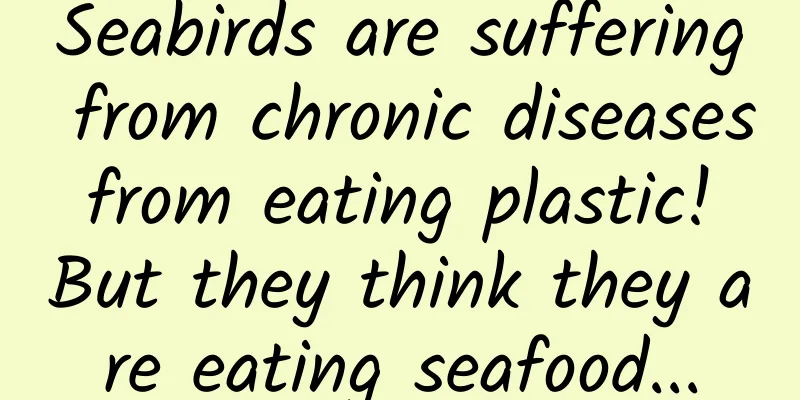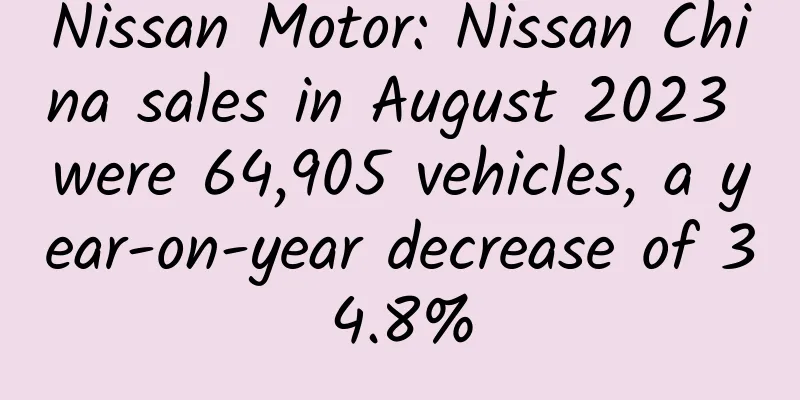Seabirds are suffering from chronic diseases from eating plastic! But they think they are eating seafood...

|
Seabirds have become sick from eating plastic, and it’s a real disease - plasticosis . There is a lot of plastic waste on the beach | Pexels This disease is similar to silicosis and asbestosis in humans - plastic debris repeatedly irritates the seabirds' stomachs over a long period of time, causing stomach damage [1], which affects the birds' digestive and absorption functions, and may especially cause malnutrition in young birds. Scientists believe that given the spread of plastic pollution, this disease may be more common than is currently known. Many marine organisms may be heading towards chronic destruction due to plastic waste. Pelagic seabirds are suffering from stomach damage caused by plastic To understand the impact of plastic waste on seabirds, scientists have turned their attention to the pale-footed shearwater (hù). Most people have never seen this bird because it mainly lives in the open ocean . But ocean currents still carry plastic waste to these seas far from humans, endangering the health of the animals living there. Pale-footed Shearwater | Brian Gratwicke, Wikipedia, CC BY 2.0 The breeding grounds of the pale-footed shearwater are on islands around Australia and New Zealand, hundreds of kilometers from the mainland. On Lord Howe Island in Australia, scientists dissected 30 pale-footed shearwater chicks, some of which died of natural causes or were humanely killed for research because of severe malnutrition. The research team found that chicks with more plastic in their bodies were smaller and lighter, because plastic damages the digestive system of chicks and affects the absorption of nutrients . The stomach of birds is divided into the glandular stomach and the gizzard. Food first passes through the glandular stomach, mixes with digestive juices, and then moves to the gizzard. Small plastic particles will continue to irritate the inner wall of the glandular stomach, especially the tubular glands that secrete digestive juices. In the process of repeated injuries and healing, scar tissue forms in the glandular stomach, and the digestive function is also seriously affected . Scientists have named this condition "plastic deposition disease." As shown in the picture, the leftmost one is a healthy tubular gland with regular shape; under the stimulation of plastic fragments, the tubular gland becomes swollen, irregular in shape, stops growing, and eventually disappears completely | DOI: 10.1016/j.jhazmat.2023.131090 The young birds in this study were 80-90 days old, meaning the plastic caused such damage to their bodies in no more than three months . Although birds often swallow sand and gravel particles, this study points out that plastic is different from gravel - gravel does not harm the pale-footed shearwater, but plastic can cause fatal injuries . Seabirds store gravel in their gizzards (the gizzard) to aid digestion, which is a natural behavior that has evolved over a long period of time, and gravel does not break into smaller particles in the bird's body. However, under the action of gravel, plastic in the stomach will break up, produce sharp fragments , or break down into smaller sizes, and eventually be absorbed into the bloodstream. Plastic disguised as seafood Why do seabirds eat plastic waste? Is it because they can’t tell the difference? No, the reality is worse than that: plastics soaked in the sea give off a seafood smell, which is a strong attraction for seabirds [2]. A 2016 study showed that when plastic waste enters the ocean, various algae and microorganisms quickly gather on its surface. In less than a month, these organisms can produce large amounts of dimethyl sulfide (DMS), an important signal molecule in the marine environment and one of the sources of seafood odor . Algae and microorganisms in the ocean attach to the surface of plastic waste, giving it a seafood smell | Pexels For seabirds that rely on smell to hunt fish, DMS is like a signal for dinner . The most affected may be the Pachyptila birds, which feed on crustaceans in the seawater and easily mistake plastic fragments for seafood. The study found that among the seabirds that forage with the help of DMS, nearly half of them were found to have plastic in their bodies, while among the seabirds that did not forage with the help of DMS, this proportion was only 8%. Fairy shearwater (Pachyptila turtur) flies over the sea, using its sense of smell to find food | Sabine's Sunbird, Wikipedia, CC BY 3.0 Scientists point out that animals such as turtles, penguins, fish and whales may accidentally ingest plastic for the same reason, as they also use DMS as a cue to find food. Birds cutting through the water The pale-footed shearwater is a key research focus for scientists studying marine plastic pollution. Shearwaters are a very peculiar type of bird. Their English name “shearwater” is composed of “shear” and “water”, which describes their light posture as they stretch their wings and skim over the waves. In the island breeding grounds, the pale-footed shearwater only lays one egg a year , and all the chicks hatch in less than a week in January. Then, they fly to the sea and live a wandering life, returning to the breeding grounds about four years later. They often appear around fishing boats, accompanying sailors on long voyages, but this habit also makes them vulnerable to bycatch (i.e. being accidentally caught in fisheries). Pale-footed Shearwater stretches its wings at sea|patrickkavanagh/flickr However, at one of their key breeding sites, the average weight and health of chicks has dropped significantly since 2010, coinciding with a sharp increase in marine plastic debris. Since the 1950s, global plastic production has doubled every 11 years. Although only a small fraction of plastic ends up in the ocean, in recent years this figure has reached 30,000 tons per year, earning the five gyres the nickname "ocean garbage patches." A 2015 study found that 80% of seabirds have plastic in their bodies, and this proportion is expected to reach 99.8% by 2050 [3]. In addition, plastic waste can entangle or entangle marine animals, causing direct harm. Some already vulnerable species may become extinct as a result. 194 plastic fragments found in the stomach of a great shearwater (Ardenna gravis), filling the entire gizzard and most of the glandular stomach | Peter G. Ryan, DOI:10.5985/emcr.20210009 Will the pale-footed shearwater disappear due to plastic pollution? Perhaps for distant humans, the loss of one or two wild animals will not affect daily life, but in the words of British novelist Douglas Adams, "without them, the world will become a poorer, darker, and lonelier place." References [1] Charlton-Howard HS, Bond AL, Rivers-Auty J, et al. 'Plasticosis': Characterizing macro-and microplastic-associated fibrosis in seabird tissues[J]. Journal of Hazardous Materials, 2023: 131090. [2] Savoca MS, Wohlfeil ME, Ebeler SE, et al. Marine plastic debris emits a keystone infochemical for olfactory foraging seabirds[J]. Science advances, 2016, 2(11): e1600395. [3] Wilcox C, Van Sebille E, Hardesty B D. Threat of plastic pollution to seabirds is global, pervasive, and increasing[J]. Proceedings of the national academy of sciences, 2015, 112(38): 11899-11904. [4] https://phys.org/news/2023-03-plasticosis-disease-plastic-affecting-seabirds.html [5] https://www.nzbirdsonline.org.nz/species/flesh-footed-shearwater [6] https://www.science.org/content/article/nearly-every-seabird-may-be-eating-plastic-2050 Author: Maya Blue Editor: Little Towel, Mai Mai This article comes from the Species Calendar, welcome to forward If you need to reprint, please contact [email protected] |
>>: Squall line is coming! Thunder, lightning, gale and hail are coming!
Recommend
Chrysler CES releases electric concept car with elevator door opening and closing
Fiat Chrysler will release its first pure electri...
Having seen the "super moon", do you want to see the "mini super moon"?
Poster production: Feng Juan On December 19, the ...
After using iPad Pro for a year, Mac users are more accepting of iOS devices
If you have been using Mac for work and suddenly ...
How to write a good title? All the tricks for a “100,000+” title!
As we all know, the number of readers of public a...
How to make the Jiayuguan clothing store mini program? How to build a clothing WeChat applet?
Open the APP on your phone, no matter which e-com...
How to use Weibo marketing and promotion in 2022!
Brushing teeth and checking Weibo are the first t...
Stop eating these common snacks immediately! Or they may cause poisoning! Have you ever eaten them?
Expert of this article: Pa Lize, Chief Physician ...
Bengbu SEO training: seo optimization: how to improve website weight?
Step 1: Let us first understand the concept of we...
The failed Xiaomi mobile phone "fan economy": Is there a possibility of reversal?
Written in front: If you are a star, there will b...
A matrix strategy project with a monthly income of 20,000+, which even novices can easily get started with
I haven't written a project analysis article ...
How to analyze Baidu bidding promotion landing page-what data should be analyzed?
Website data analysis refers to the process of in...
Beef belly hotpot, monkey dung olives... the behavioral patterns of species are more colorful than we think
Calendar Girl Asks Which of the following is a hu...
As a community operator, do you still want to stick with it?
I think there is some truth to these three doubts...
How to reduce the size of Android apps
【51CTO.com Quick Translation】I wonder if you have...
10 classic marketing planning cases!
When doing marketing planning , there are three t...









